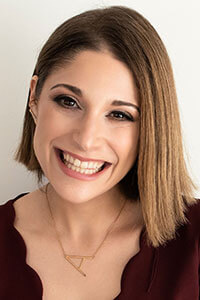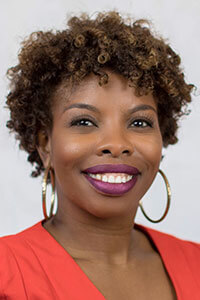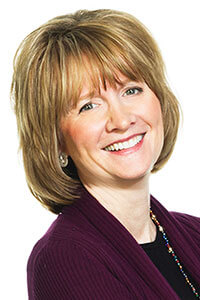
PCMA Convening Leaders 2020 takes place Jan. 5-8 in San Francisco. (Sean Pavone Photo/Adobe Stock)
 When PCMA Convening Leaders 2020 comes to San Francisco’s recently expanded and renovated Moscone Center, Jan. 5–8, it will be bringing back a studio approach to immersive-learning environments that it launched in 2019. What defines a studio? It’s often described as a workspace specially equipped for the teaching or practice of an art — which is fitting, given that the work of designing and executing a successful event is nothing short of an art form.
When PCMA Convening Leaders 2020 comes to San Francisco’s recently expanded and renovated Moscone Center, Jan. 5–8, it will be bringing back a studio approach to immersive-learning environments that it launched in 2019. What defines a studio? It’s often described as a workspace specially equipped for the teaching or practice of an art — which is fitting, given that the work of designing and executing a successful event is nothing short of an art form.
On tap for 2020 are content studios covering eight topics ranging from audience-acquisition strategies to what’s trending now — all aligned with this year’s Convening Leaders’ overall “Reach” theme.
“There is a thread of reaching toward lofty goals that runs through all of our content studios,” Zibby Aman, PCMA’s senior manager of education, said. “We are challenging attendees to set goals [for their] Convening Leaders experience, and to let subject-matter experts and inspirational speakers help them create tangible steps that will unlock the energy and creativity to overcome their challenges.”
As PCMA puts the finishing touches on the Convening Leaders program, Convene spoke to a handful of speakers who will be engaging participants in the “Media” and “Trending Now” studios. Their sessions range from how event organizers can create podcasts — and why they should — to how to capture an audience’s attention when you have only eight seconds to do it. Here’s a look at what to expect.
Alissa Carpenter and the Multigenerational Workforce

Alissa Carpenter
With older employees staying on the job longer and Generation Z entering the work- force, it’s possible to have as many as five generations in one office — or at one event. One of the biggest challenges in a multigenerational environment is communication, says career coach Alissa Carpenter, who through her company, Everything’s Not OK and That’s OK, helps organizations and workers navigate barriers, including those between generations.
“At the end of the day, we all want to be heard, valued, and appreciated, but how we communicate and our work styles vary,” said Carpenter, who will lead a “Trending Now” studio session on navigating a diverse workplace. “As a team and organization, I think it is crucial to have a conversation about expectations, communication preferences, and how individuals like to seek praise.”
Carpenter said that means sharing expectations up front to help mitigate miscommunication or assumptions about things such as work hours and the intended results of projects, and understanding communication preferences, especially in times of emergency.
Carpenter won’t limit her focus to generational differences. She’ll be sharing how to approach communication and engagement strategies in other areas of diversity, including sexual orientation, race, religion and gender — for example, recognizing “hot button” phrases to avoid and what to say instead.
At Convening Leaders, Carpenter said, “we will not only be talking about communication in diverse workplaces, but the importance of various communication channels to promote and keep attendees engaged at events. In this high-touch digital world, we need to find unique and alternative ways to stand out and attract all generations.”
Ameerah Saine and the Power of Podcasting

Ameerah Saine
Event planners are tuning into podcasts on topics ranging from chatbots to event security as ways to hone their skills. But should they consider creating podcasts for their own audiences?
Yes, says Ameerah Saine. “I think it’s an excellent opportunity to connect with your audience on a different level,” said Saine, who specializes in marketing, sales, and digital media and hosts a podcast through her lifestyle media company, Brunch and Slay. Plus, she said, creating
a podcast “is not as intimidating as one would think.”
To help prove that last point, Saine will collaborate with Mike McAllen on producing a live podcast during their “Media” studio session. A veteran of the meetings and events industry, McAllen — who will serve as podcast producer during the session — has shifted from event production to podcasting via his Podcasting4Associations.
“He’ll talk in the beginning about the equipment that he’s using to record live as we’re there. And then I’ll dive into more of what you do from A to Z to bring your podcast to fruition,” Saine said. “We’re tapping into both of our wheelhouses.”
Saine and McAllen plan to demonstrate how a podcast can be plug-and-play and show “the different things you can do with a podcast” — besides creating entertaining content for people to listen to while driving or working out.
Podcasts could serve as “another outlet” for event planners or organizations, Saine said. “Maybe your LinkedIn posts are a little stuffy because LinkedIn is a little bit more business, but maybe through the podcast,” she said, your listeners can “get to actually know your CEO, right? So you can use it in different ways and for different things to appeal to your audience.”
Saine — who also hosts events, classes, and workshops focused on empowering women through her Brunch and Slay company — hopes their session helps event organizers see that a “podcast is another great way to touch your audience,” she said. “You want to appeal to every type of follower or contributor or supporter that you have.”
Saine also will lead a second “Media” studio session on connecting with multicultural audiences through social media.
Debra Jasper and Engaging the Hyper-Distracted

Debra Jasper
Eight seconds. That, Debra Jasper says, is all the time you have to get your audience’s attention. “It doesn’t mean we won’t tune in longer,” Jasper, the founder and CEO of coaching and training firm Mindset Digital, said. “It just means we’re making a snap decision about whether your content is worth our time.”
Jasper, who will lead a “Media” studio session on how to capture your audience’s attention, said that “it’s just harder and harder to get people to tune in. We all do this. We get up in the morning. We call up our email. And the first thing we do is figure out what we can delete without opening it. We’re not answering phone calls. You call, it goes to voicemail and half the time people don’t even listen to voicemails.”
For event organizers, the challenge is trying to capture “hyper-distracted audiences,” she said. While it’s easy to get a message out, it’s much more difficult to “get a message in” — to get your audience “to slow down and tune into what you have to say.” At her session, Jasper will discuss three mandates for doing business and capturing audience attention in the digital age. “One mandate is that every touchpoint matters,” she said. Jasper will share her SOS — short, organized, and skimmable — framework, which doesn’t just apply to emails, or standing out from the crowd online. Events, too, have to follow the SOS strategy, Jasper said, pointing to it as one reason TED-style talks are so popular.
“Increasingly for speakers and event organizers, the challenge is how do we create experiences that are interactive and engaging so that people don’t want to look at their phones, so they’re really engaged by not just the speaker but by the interaction and by the overall experience,” she said. “Whether we’re in the audience or we’re bringing in the audience, we are all overwhelmed and have too much to do. Creating those experiences isn’t easy — it takes time and resources and thought. And when you don’t have the time and resources, sometimes you get in a space where you are doing what you know. It takes a lot to leverage an entirely new approach and a new way of thinking about engaging today’s digital audience.”
Cristi Kempf is Convene’s executive editor.
MORE CONVENING LEADERS
- Susan Sweeney, CSP, will lead a “Media” studio session to help event organizers get more comfortable with influencer marketing.
- Condoleezza Rice, Simon Sinek, Bozoma Saint John, and Gene Kranz will speak on the Main Stage.
- Go to coveningleaders.org to register, and for updates to the program.

